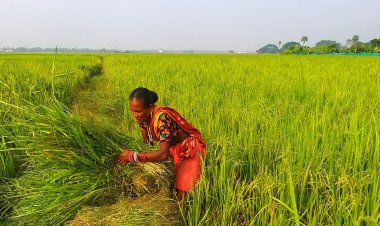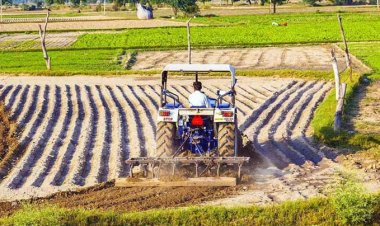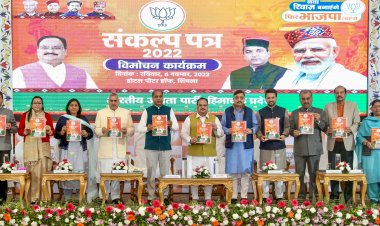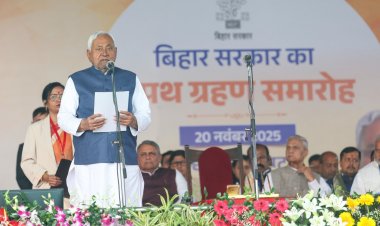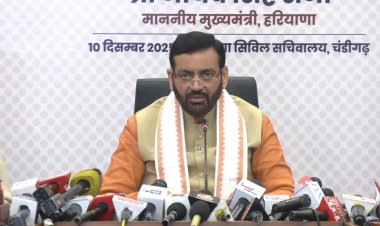Govt should set up “National Rural Prosperity Fund” for improving private capital formation and asset creation in rural areas
The government has to put back agricultural growth on top of the development agenda. ‘Business as usual’ will not suffice. The dynamic changes now influencing agricultural production, diversification and competitiveness require a thorough, honest and unbiased analysis of the existing programmes and schemes to develop a better path for supporting tomorrow’s agriculture.
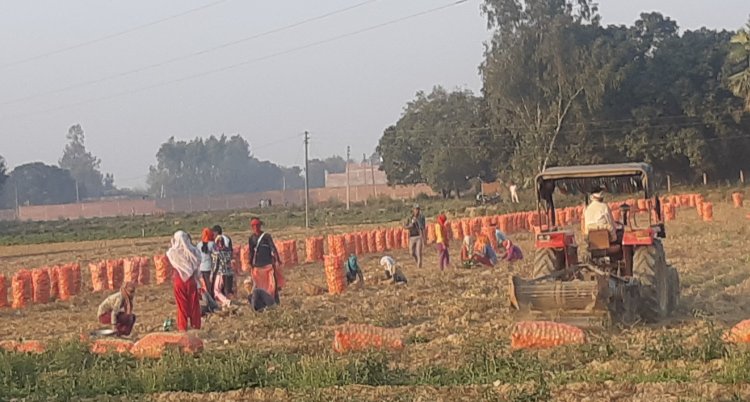
Every person living in a rural area, irrespective of whether they own a piece of land or not, is a farmer. And improving their income and overall living conditions should be the foremost agenda and concern for the government. Agriculture impacts and gets impacted by the entire spectrum of activities that one can visualize in the rural space. Agricultural growth and well-being are also the engines of growth for the non-farm sector.
The key to the farmers’ prosperity — and the prosperity of the entire nation — therefore depends critically on transforming and rejuvenating the agriculture sector. Not only is agriculture a major segment of our economy, but, more significantly, it is also the provider of gainful employment and incomes for the maximum number of people. Enormous potential exists for the rapid growth of agriculture as India is endowed with abundant arable land, favourable seasonal conditions and shifting consumption patterns driven by increasing income levels.
The impact of agricultural growth on farmer empowerment is apparent. It leads to an additional income generation in the hands of the farmers, thereby increasing their confidence and purchasing power. Owing to diverse and favourable agro-climatic conditions, India has a significant competitive advantage in agricultural production and the potential to be globally competitive by producing a wide variety of high-value and quality produce. These advantages, if leveraged optimally, can translate into India becoming a leading food supplier to the world.
I am of the view that the government should set up a “National Rural Prosperity Fund” for improving private capital formation and asset creation in rural areas. This fund may be created by pooling funds allocated for implementing schemes for the rural and agriculture sector such as the construction of rural toilets, rural housing, Kisan Samman Nidhi and various subsidy and transfer payment schemes like interest subvention scheme, subsidy for inputs, etc.
The income generated from the investment made by this fund may be used for providing a universal credit default guarantee for all types of rural farm and non-farm sector loans. With no default risk, every person living in the village will become creditworthy and the banks will not hesitate to extend the required credit facilities to them. Besides, with a default guarantee there will be no risk cost for rural credit portfolio and the banks can pass on the benefit to their rural borrowers by lowering the rate of interest. This arrangement will facilitate a higher level of private capital formation and asset creation in the rural farm and non-farm sector, leading to better employment and earning opportunities. With easy and hassle-free access to credit facilities, the farmers will have the capacity to buy inputs at market rates and improve their living conditions, including sanitation, hygiene and housing.
Participation and inclusion have to be central to our approach to agriculture development. Group-based approaches, including cooperatives, are an ideal instrument in such a strategy, and the country has long drawn on the strength of the movement. They are the key organizational form in building new models for agriculture development.
The declining trend in investment in agriculture has to be reversed by stepping up investment in agriculture through the creation of group assets at the farm level by pooling the land of farmers. It will be most appropriate to shift the loan burden of farmers from the individuals to the groups.
Agriculture is facing a major challenge. Its focus is shifting from subsistence to profit. Given the choice, nearly half of the farmers will shift away from farming. Earlier, farming was rated top in the occupational hierarchy; now it is at the bottom. The reason is that there is a very low and, in most cases, negative return on capital in agriculture.
This situation needs to be addressed urgently before it becomes too late. Farmer suicide and agitation are manifestations of these problems. All the stakeholders, i.e., government, industry and civil society organizations, have to come together to address the problems facing agriculture and the rural sector. The role of industry benefiting from the sector (both at pre- and post-harvest stage) is very critical and crucial in this endeavour.
Human population growth, improved incomes and shifting dietary patterns are increasing the demand for food and other agricultural products. At the same time, however, the natural resource base underpinning agricultural production is under threat, with growing threats to genetic diversity and the degradation of land and water resources.
Revolutionary advances in biological and information sciences offer great potential to address these resource constraints. However, making their benefits available to small-scale farmers is a major challenge.
Urban consumers, both domestic and international, are increasingly driving the transformation process by demanding diversified, high-quality and safe food. International trade is increasing rapidly in response to these demands, bringing with it a set of global governance treaties and regulatory frameworks whose implementation requires local capacity. How to leverage these shifts so that small and impoverished farmers reap the benefits is a major challenge.
Most high-potential agricultural areas of our country have now reached the limits of land and water resources that can be exploited. The closing of that land frontier – not to mention the acute water scarcity in many areas, diminishing returns and negative environmental effects from high levels of external inputs – means that future growth in these areas will largely depend on the substitution of inputs with knowledge. This means that future agricultural growth in these areas will be increasingly knowledge-based and the growth in total factor productivity will now need to be the major source of growth in the coming decades.
The government has to put back agricultural growth on top of the development agenda. ‘Business as usual’ will not suffice. The dynamic changes now influencing agricultural production, diversification and competitiveness require a thorough, honest and unbiased analysis of the existing programmes and schemes to develop a better path for supporting tomorrow’s agriculture.
The agriculture sector has the potential to transform India into the leading agro-economy of the world. However, a holistic and integrated approach is required to achieve sustainable development of the sector. A paradigm shift is required in the outlook for agriculture — a shift in approach from subsistence to profit; a shift in orientation from production to marketing; and a shift in focus from quantity to quality. A scientific and innovative approach to agriculture will enable us to compete globally in cost and quality with respect to global benchmarking and our core competitive strengths in various kinds of agriculture produce.



 Join the RuralVoice whatsapp group
Join the RuralVoice whatsapp group


















